OVERVIEWMy Cook Strait Swim was all about the Journey. I loved every minute of it, and I am grateful to have completed this Swim. Descriptions of Cook Strait are available at the conclusion of this write-up but the quick version from Wikipedia states: Cook Strait (Māori: Te Moana-o-Raukawa) separates the North and South Islands of New Zealand. The Strait connects the Tasman Sea on the northwest with the South Pacific Ocean on the southeast. It is 22 kilometers (14 miles) wide at its narrowest point, and is considered one of the most dangerous and unpredictable waters in the world. https://en.wikipedia.org/wiki/Cook_Strait Wikipedia’s definition pretty much sums it up. The adverbs “very” or “extremely” could have preceded the phrase “unpredictable waters in the world” without exaggeration. I loved this swim and all my time in in New Zealand. Getting to Wellington, New Zealand was a 4 ½ year trek. I sent a deposit to Phil Rush, the Cook Strait Organizer, in 2018, and was put on “The List.” Periodically, I sent Phil emails to let him know I was still alive and hoping for a swim. It was a waiting game, and one that took a lot of patience on my part. I next heard from Phil when he emailed me in July 2022 to ask which tide I would prefer in 2023. I chose a mid-March tide and received a window of March 14 to 20th. The wheels were now set in motion. THE TRAININGIn my regular life, I swim about 20,000 yards/18,300 meters over the course of a week, keeping me in decent shape. The approximate total distance of the Cook Strait swim is 18 miles/32,000 yards/29,000 meters. Like my other marathon swims, I have found that training the distance of the swim every week prepares me well. In October 2022, I put together a six-month training plan, with a weekly target yardage goal between 30- & 35,000 yards/27,500 -32,000 meters; with little deviation, I stuck to it. This Training Block focused on speeding up my 100-yard pace time from 1:30s to 1:25s. (When I was in my 20s and 30s, my 100-yard pace time was 1:10-1:15 but that was 30+ years ago.) This increase in speed took months of hard, consistent work but during my Cook Strait Swim, I was able to hold a steady pace, despite the currents and tide pushing at me from all sides. The bulk of my training happened at the Rec Plex in Pleasant Prairie, Wisconsin (a.k.a. “Pleasant Prairie.”) Three days a week, I drove to Pleasant Prairie, 40 miles/65 kilometers north of my home and swam 6000 to 9000 yards/5500 to 8200 meters each session. For the longer yardage days, I began with a straight 4000-yard/3600-meter swim because 1. I covered this distance in about an hour. 2. It helped my body and brain get a sense of how long an hour feels, and 3. Hopefully, I was simulating the start of my Cook Strait swim. The added bonus is that a warmup like this takes care of a big chunk of the yardage so I would “only” have 2,000 to 5,000 yards/1800 to 4600 meters to go! Two days a week, I swam about 3500 to 4000 yards/3200 to 3600 meters with an organized group that mainly focuses on speed work and socializing. On Saturdays, I swam solo, swimming as far as I needed to obtain my weekly yardage goal. Sunday is always a rest day. In January 2023, I met up with swim friends Liz Fry, Kris Rutford, and David & Leslie Blanke for a weekend of laughs and swimming. This time confirmed I was in pretty good shape. Since Liz, David, and Leslie all had been to Cook Strait, they were able to answer lots of my questions. A week later, I swam the USMS One-Hour Swim and covered 4505 yards/4120 meters, the furthest distance I had done in 13 years. A few weeks after that, on a whim, I did a 2-hour swim, complete with a few feeding stops, and covered 8270 yards/7560 meters. These benchmarks build my confidence but I was nowhere near the finish line. I had to maintain my undistracted training focus and hammer on. “Gym Work” continues to be huge part of my training plan, known to swimmers as “Dryland.” Dr. Brian Cunningham again developed a program to build up my strength as well as maintain stability and flexibility. I have worked with Brian since 2005 and his Dryland workouts have kept me fairly injury-free, which is saying a lot since I swam Cook Strait when I was 6 weeks shy of my 59th birthday. (To contact Brian, please send an email to: [email protected]) Leading up to my Hawaii Swim in March 2022, I focused more on swimming yardage because the distance was 28 miles/45 kilometers, 10 miles/16 kilometers further than Cook. After Hawaii, Brian and I discussed my need to kick more consistently, pull stronger, and increase my speed for Cook so my Dryland program focused on these components. I worked a lot on core strength, increasing pectoral strength, and building up my hip flexors. I did two 45-minute weekly gym sessions using my body weight, bands, and a Swiss Ball. Two additional weekly sessions were spent lifting weights. Brian would tweak this program monthly. When I got to New Zealand, I felt strong and capable. Brett Richardson, the Navigator/Observer for my Cook Swim, remarked how well I had maintained a six-beat kick the entire way and kept a high body position in the water. These attributes are a testament to Brian’s well-orchestrated program. These marathon swims make me tired (in fact, very, very tired afterwards), but no body parts have been permanently afflicted. The training I do for a marathon swim takes a certain mentality. Notice I said: “The training I do”, not “The training you should do”, since one size does not fit all, and it is up to the individual to decide what he/she needs. This training involves the need to commit to challenging work for several hours and continue showing up for days/weeks/months on end. I love swimming with lot of different people, but the list is short for those with a similar “All In” marathon mindset. I’m fortunate to have found a few training partners wired with a similar focus and drive. Sure, there are tough days on which I have to dig down deep to find the motivation to start but once I get going, I’m usually ok. What I cherish about swimming at Pleasant Prairie is it’s often just me and the pool. No distractions from the task at hand. Either I do the work or I don’t. To make myself accountable, I’d often set mini-goals, such as “Be in the water by 7:45 AM” or “Only take :30 seconds rest before starting the next set.” Training alone is a misnomer. I’ve always got someone in mind who’s with me, even if that someone is me in my role as coach. “Me, The Coach” and “Me, The Athlete,” had a lot of stern conversation before Cook that often went something like this: Me, The Athlete, in the whining-pleading pose: “I just can’t do this today. I’m too fill in the blank. What you’re asking me to do is too hard.” Me, The Coach, in a calm, measured tone: “Let’s start and see how it goes. Leave on the :60 please.” Me, The Athlete would do her best. After a little bit, Me, The Athlete might even admit “This isn’t so bad.” Me, The Coach would calmly nod in agreement. On days I was feeling like a crumpled piece of paper, I allowed myself to change intervals on sets but still finish the workout almost every time. Learning to talk myself down off the emotional ledge has built mental toughness along this journey. My daily life and my long-range plans are things I keep pretty insular. It has been my experience that the wider the group that knows about my plans, the greater my “distraction factor.” I am wired for sustained focus and the need of time to train. I let most people know about my Cook Strait swim about 10 days before leaving for New Zealand. By then, all the training had been done and I had time to answer questions. In November 2022, I began to make short recordings after random training sessions at Pleasant Prairie, to explain my reactions to the workout I had just done and show Pleasant Prairie’s seasonal adaptations on the scoreboard. I found it fun to watch these after I had completed Cook Strait since when I recorded these videos, I didn’t know what the outcome would be. There is an expression of both hope and apprehension. The link to these recordings are available in the RESOURCES section at the conclusion of this writeup. ARRIVING IN WELLINGTONMy 25-year-old daughter, Julia Green and I arrived in Wellington on the afternoon of Wednesday March 8th, after traveling for about 30 hours. Our third team member, Lee Harkleroad would join us on Sunday March 12th. Lee had been a part of my North Channel crew and remains a close swim friend. Julia and I arrived at our AirBnB, in the old Dental Clinic Building, did a little unpacking, then took a stroll into the Wellington harbor area. This terrific metropolis touts itself as the WINDIEST Capitol in the world, a detail made evident during our initial stroll. We also found Freyberg Beach in Oriental Bay, the swimming beach Liz had told me about. When I saw the public showers and parking lot alongside a small beach, I told Julia, “This is where the swim group meets. Let’s come here at 8am tomorrow because we’re liable to connect with some swimmers either coming or going.” THE SWIMMING SCENEA little after 8 AM the next morning, Julia and I were introducing ourselves to a few of the aptly named “Washing Machines” swimmers that were warming up at the beachside coffee bar. We met Dougal Dinlop who oversees the group, a wonderful person similar to Martin Strain of the Chunky Dunkers in Donaghadee, Northern Ireland. I gave Alan Clayton my business card, then Julia and I took a swim. The next morning, we arrived at 6:52AM, as Dougal dictates, and everyone entered the water by 7AM. Since our brief introduction the day before, word had spread amongst the group about my swimming background and why I was in Wellington at this time. The Washing Machines Community quickly welcomed Julia and I into their fold, and we are happy to count many of them as supportive, solid friends. Dina Levačic of Split, Croatia was also swimming during the same tide. Dina and I had met four years ago in Japan when we swam the Tsugaru Strait on the same day, and we had kept in touch. It was great to see Dina in person again, as well as her parents, Mladen and Željana. She would celebrate her 27th birthday on March 14th. We enjoyed several swims together and our families spent a lot of time together in New Zealand, especially at Freyberg Beach. https://www.doversolo.com/stories/category/tsugaru-strait https://longswims.com/p/dina-levacic/ On Friday, Saturday, and Sunday, Julia and I swam daily at Freyberg Beach, explored much of downtown Wellington, and prepared my swim gear so we would be ready to go. The weather for the following week looked “promising” for a swim. PRE-SWIM MEETINGOn Sunday morning, Dina and I met with Phil Rush, the organizer of the Cook Strait Swims. Phil is quite an accomplished swimmer in his own right. https://longswims.com/p/philip-rush/ Our crews were with us for this meeting so everyone received the same information and had the opportunity to ask relevant questions. Even when I was a much faster swimmer, in my 20s and 30s, my major goal for any swim is to complete it, and I told Phil as much. I had heard things about Phil before arriving in New Zealand. Yes, he is hard to get a hold of but once my swim window had been nailed down in July 2022, there wasn’t much handholding I needed. The facts were apparent: train for the swim, get to Wellington by March 13th with a crew, and do the swim when Phil gives the go-ahead. Meeting Phil two days before our swim was fine with me. I think Phil appreciated my independence, preparation, and desire to finish. His thorough and straightforward briefing illustrated a good idea of what lay ahead. It was going to be a challenging swim and I was ready. Someone asked me shortly after this briefing, “Did Phil give you any good advice?” I replied, “Yes, do what he says.” Marcia & Phil Rush Up to this point in the season, most of the swim times ranged between a fast 6 and 9 hours. Andy Donaldson set the overall record of 4:33 on March 7th. Although Phil couldn’t accurately predict what the tides and currents would do on our day, he mentioned these quick swim times and was hoping for similar conditions for us. (So was I!) The major considerations in this swim are the unpredictability of the waves, tides, and currents, and cannot be underestimated. Dina is a much faster swimmer than me at this point in our lives, and I am very supportive of her ability and achievements. Since we were going on the same day, I sensed Phil would go on her swim and that was completely ok with me. During our crew meeting, Phil thought Tuesday was looking like the best day for our swim. Dina mentioned a time goal to Phil, and I silently thought, “Uh oh. Mother Nature is going to have fun with this. We’re in for a tough day.” And so it went. Julia, Lee, and I spent much of Monday resting and finalizing the swim gear. We went over the roles each of us had. To have Julia as Crew Chief gave me great joy. She had grown up during my swim career and it was an honor to have her oversee this major swim. I was grateful she was with a part of this journey. Around 7pm on Monday night, Phil confirmed that we were on for a Tuesday 7AM start. Straightaway I handed my phone to Julia – I wouldn’t touch it for the next 24 hours, then started winding down to bed while Julia and Lee tinkered with the gear “just a little bit more.” I rarely sleep well the night before a major swim but I have come to realize this has no effect on my performance. At 3AM on Tuesday March 14th, the alarm went off and our day’s plan went into action. Dougal met us in front of our AirBnB at 3:45AM, then we drove in convoy to Dina’s apartment. I greeted her with a quick “Happy Birthday” and card, then we drove in tandem to the Mana Porirya Marina, about 30 minutes north of Wellington, a.k.a. The Mana Cruising Club. I’m glad Dougal led us to this marina since it would have been hard to locate it ourselves in the dark. At 4:45AM, in the (free!) overnight parking lot, Phil introduced us to our crew: Captain Donald, Brett Richardson, and Corey Fairbairn. For the entirety of the swim, Captain Donald piloted the 36-foot/13-meter Escort Boat, HYPE. Brett fulfilled his roles as Official Observer and Navigator flawlessly. Corey piloted the Zodiac (‘IRB,’ a.k.a. Inflatable Rescue Boat) and kept “his swimmer” safe and motivated throughout the swim. Rounding out the crew, Julia Green fed and cheered for me from the Zodiac, and Lee Harkleroad maintained communications with the outside world and recorded both a written and photographic log throughout the day. Everyone did their job, resulting in a well-executed, successful swim. I could not have asked for better. Panorama of Cook Strait Swim All my swims have their moments of stress and this swim’s moment of peak anxiety happened before we even left the dock. Once we were loaded up, the bag containing my bathing suit, cap, and goggles was nowhere to be found. Where could it possibly be? If it’s at the AirBnB, it’s too late now to get it, but logically, it couldn’t be there. In the next 10-stressful minutes, Julia handed me my backup suit which I put on obediently, and she started going through her and Lee’s equipment to see what I could do about a cap and goggles. I simply knew something was going to work out. And then, suddenly my bag appeared. It had somehow been put on Dina’s boat even though our gear was completed separated at all times. Very strange but disaster averted, once again. Julia was rattled and I looked into her eyes and told her, “On every one of my swims, there is some major moment of stress. I hope we have just had ours.” Lesson learned: Have at least two stashes of the important gear and/or have the swimmer carry their gear at all times. Now that our Escort Boat was all sorted out, Captain Donald gave us the safety briefing. We then motored from the Marina in tandem with Dina’s Escort Boat, The Tangaroa, and crew, heading together towards Ōhau Point (“Oh-How” Point) for the start of our Cook Strait Swims. It would be like this for most of this wonderful day as Dina and I swam towards the South Island of New Zealand. Many of my swims have begun much less calmly, even factoring in “The Backpack Situation.” Here in New Zealand, 8,350 miles/13,442 kilometers from home, everything was neatly falling into place. Corey peppered me with lots of questions during the 90-minute trip to Ōhau Point, in a crash-course attempt to get to know me. He would be piloting the Zodiac so a good relationship between us mattered. Julia would also be in the Zodiac so she could offer Corey insight if/when necessary during the Swim. Corey was amused that Julia had brought along a “Yellow Card” (like in Football/US Soccer) to issue to me if I got testy. THE STARTThe dawn started to break shortly before we arrived at Ōhau Point. I put on my cap and goggles while Corey and Brett prepared the Zodiac. Julia and Lee slathered me with another a coat of sunscreen (on top of the one applied at 3AM) and applied Desitin (Zinc Oxide) to my known chaffing points: around my neck, along my suit lines, and on my biceps. I was ready to go. Julia, Corey, & Marcia heading to the Start in the IRB/Zodiac Brett and Lee helped me into the Zodiac, joining Corey and Julia. I sat down on the gunnel and we motored about 100 yards/meters to the start, a designated formation of rocks at Ōhau Point. Dina was about 30-seconds ahead of me and shot off like a rocket. I jumped out of the Zodiac and stroked the 25 yards/meters towards the rocks. Everything about the water felt great: the texture, temperature, and clarity. YEA! Bring it on! I’m all set! I touched the rocks, the horn sounded, and my swim began. Dawn Breaks and So do the waves From the first strokes, I loved this swim. If everything went as I hoped it would, I felt I had a good chance to make it. The skies were a beautiful pale blue in glorious contrast to the clear, dark teal water. I was in a good mental place and taking 68 strokes a minute. My 25-year-old daughter was my Crew Chief in the Zodiac. Lee was handling communications on the Escort Boat, and a crew I had just met 2 ½ hours earlier were handling everything else. What’s there not to love? One Stroke at a Time The general plan was to begin at “mid-tide” as the water pushed from west to east. Then we’d pick up the high tide after a few hours and get pushed westward for the majority of the swim. Then we’d catch the changing tide again and hit land. The tricky thing about this swim, when swimming in either direction, is the landing area seems to be an area approximately 3 miles/5 kilometers or less. In most other swims, such as with the English Channel, you have about a 20-mile landing area. Heading Straight Towards the Finish, Although None of Us Knew it at the Time The chance of encountering debilitating marine life was low. I ran into “no-see-‘em” jellyfish: transparent, stingless jellies of various sizes that are simply annoying and got in my suit, especially at the end. I saw a few fish, mostly notably either a Barracuda or a Frost Fish swam deep below me at about 2 hours. During much of the mid-swim, curious birds greeted me, many which got pleasantly close. I thought of them as angels coming to say “Hello!” Seven hours into the swim, at 1400 hours, a pod of dolphins joined us. I didn’t actually see them but heard them clicking underwater for several minutes. At the next feed, Julia excitedly told me “We saw dolphins! Did you see them?” I told her I’d heard them, and “that was pretty cool.” Lee took several pictures of the dolphins from the Escort Boat doing their dolphin thing. Dolphins! I could hear them clicking underwater Starting around 2 hours into the swim, at 9 AM, we had about a 30-minute span of major Flotsam. Several groupings of large logs (3-6 feet/1-2 meters in length, 3-feet/1-meter in diameter), branches, and debris moved quickly through the Strait and I had to swim around them. Julia did an excellent job continuously pointing to the logs so I would avoid hitting them, which could have been a swim-stopper. Corey speculated this was continued run-off from Cyclone Gabrielle that had blown through the North Island of New Zealand 3 weeks earlier. MID-SWIM ROCKING & ROLLINGThe water had been “lumpy” for the first hour then settled down for the next hour. This period of relative calm was followed by increasing wave heights and Rollers careening rapidly across the surface. I was mostly oblivious to the waves but I noticed the water color changing into a chalky, lighter teal blue. At times, I would see either the Escort Boat or Zodiac high up on the water only a moment later to disappeared into a trough. The same thing happened with the various “Island Rocks” in the Strait, like The Brothers and Awash Rocks. Less than a year ago, similar big, strong water pushed me around in the Ka’iwi Channel in Hawaii. I accepted the situation then and I accepted it now; I just kept swimming. Captain Donald thought a localized tidal movement was creating the waves since he could see calmer water both behind us and in front of us from the boat as it bounced in the chop. He also sensed that the tides were changing an hour earlier than forecasted. Mother Nature was messing with us! Obviously, on I swam. When I swim, I breathe every 3 strokes, meaning I take 3 strokes (left arm-right arm-left arm) and breathe, then 3 strokes (right-left-right arm) and breathe, and on and on. If I saw something of interest, I would take another stroke cycle (a pull with each arm) and breathe to that side again to see if I could play tourist for a second. Most of the time, within that 1 to 2 second gap, whatever was there to see (a huge rock formation, a ferry, a boat, etc.) was blocked from view by the rapidly variable height of the water. Mother Nature would let me see what she wanted me to, so I kept swimming on: three strokes – breathe – three strokes – breathe, and on, and on. When it was time for me to “feed” Julia held up 2 fingers, meaning I had 2 minutes until she would toss a bottle to me. My first feed came at an hour, then every 40-minutes thereafter. When I saw the sign, I counted out 120-130 strokes then stuck my head up to see if the feed was ready. During these 30- to 60-second stops, I drank Endurox from a water bottle, sucked down the opened Hammer Gel that was safety-pinned to a band around the bottle, and rinsed out with mint mouthwash from another bottle. (This helps dissipate the salt in my mouth, lessening the swelling.) Julia would relay messages of encouragement during these precious seconds and Corey would be leaning over in the Zodiac to get in my face with commentary and questions. It took me few feeds to realize he was continuously assessing my physical state and mental acumen, which, in turn, he would radio back to the Escort Boat so everyone knew everything that was going on, including when I peed. 😊 And yes, Corey, I will gladly reply, “It’s your happy face,” the next time you point to your smile in the middle of the Cook Strait and ask me, “What’s this?” For the entire swim, I only saw his Happy Face. I Fed. Corey Instructed. "What's this?" For the first few hours, I looked back at the North Island often and tried not to look ahead. Corey told me to stop looking back so I made a deal with myself: Only look forward or back at each feeding. With 40 minutes between looks, the distance we moved forward was more noticeable than checking every 3 strokes, a “No-No” that has wreaked havoc on my neck in other swims. I also decided not to ask how long or how far we had come because I was going to swim to the other side and these questions create a bunch of mental projections and estimations that are completely out of my control. I was doing my job: To Swim. At one point, Corey informed me, “We’re nearly half-way.” I quickly retorted, “I thought half-way was three strokes from the end.” Onwards towards the South Island The Escort Boat would circle around us, looking for the “best water,” an applicable term to the ever-fluctuating water of Cook Strait. Lee observed Captain Donald and Brett in constant communication about the best course, making adjustments of 1 to 2 degrees along the Rhumb Line (Definition). They would relay these coordinates to Corey, who in turn, would realign the Zodiac; I simply followed along. For most of the swim, I was within 10 feet/3 meters of the Zodiac’s side, except for that one time early on when I was about 20 yards/meters away for a few minutes and Corey gave me a stern talking to, which I deserved. Crazy Water between Left & Right Every six strokes, I saw Julia sitting at the bow and Corey in the stern, both kitted out in full foul-weather gear: chest-high waders, fully hooded jackets, and most importantly, insulated, waterproof, knee-high boots. (Thank you, Captain Scott Souders!) While still in Chicago, we figured that everything in the Zodiac was probably going to get wet and this day did not disappoint. It was completely worth it to haul Scott’s gear to New Zealand and give it a thorough workout, keeping Julia warm and dry. ONE STROKE AT A TIMEI swam on and on. The sun rose in the sky, lots of birds checked me out, and I kept swimming. I was loving what I was doing and clearly the training I had done was serving me well. I was taking 60 to 64 strokes a minute and nothing hurt. Every time I stopped for a feeding, I was breathing hard so I knew I was really exerting myself but that’s what the training was for! From this far out, Corey was aiming to land me on this Beach One way I measured my mental acuity mid-swim was by saying the Lord’s Prayer (Episcopal Version): Our Father, who art in heaven, hallowed be thy name; thy kingdom come; thy will be done; on earth as it is in heaven. Give us this day our daily bread. And forgive us our trespasses, as we forgive those who trespass against us. And lead us not into temptation; but deliver us from evil. For thine is the kingdom and the power and the glory forever and ever. Amen. This is harder than it seems to recite something you know well when you are doing something else that requires complete attention. In a pool, the turns throw me off so I forget if I had just been given this day our daily bread or forgiven our trespasses or been led into temptation. In open water, it’s actually a little easier since there are no walls to avert my attention but there are times I am still thrown off. Did I already forgive us our trespasses or forgive those who trespass against us? And what comes next? Oh, right, the temptation part then deliver us from evil, and I’m finally home free to start over. “THIS time I’m gonna get it right without any stumbles. Do it again.” This recitation kept my brain quite busy as my body stroked between the North and South Islands of New Zealand. THE FINISHAt what would be approximately 3 hours until I finished, Corey told me that I needed to pick it up so we could get inside “That Rock.” Said rock was about a mile/1500 meters to my south and large enough to be easily seen by me. What I didn’t know at the time was that this rock marked the eastern boundary of the finishing area, a crescent basin stretching across the northeastern part of Arapaoa Island. If I got east of that rock, my swim would be over because, from what I garnered from listening to many members of the Washing Machines afterwards, “It’s too difficult to finish past that point due to the way the currents move.” After my swim, I made up the name “The Crescent Basin,” now that I had “lived” it. It seems that if one is swimming from the North Island, the only place to land on the South Island is in this area. When Corey told me to pick it up, I didn’t need a detailed explanation; I just did what I was told and picked up the pace. We were at the point that Liz told me would come: “Save something for the last two hours.” The Rock we need to stay East of to Finish And the Rock we need to stay West of to Finish Close to the South Island, I realized the sun was lower in the sky than it would be for an eight-hour finish but we were getting there. I calculated that it was about 5 or 6PM. The waves had calmed down a bit once we got into “The Crescent Basin,” and the dark teal color of the water returned. The imposing, magnificent cliffs loomed right ahead. So many craggy rocks protruded from the folds of land. Pictures don’t do this beauty justice. I still was unsure where I was going to land. I simply kept taking stroke after stroke towards the coast. Shoreline of the South Island The Beach I Finished on ... Eventually Corey told me, “It’s 500 meters to the beach.” He wanted me to finish there since it’s nice to have a definitive landing spot rather than landing on some random rock, and there was still plenty of daylight. I was also in good physical shape at the moment, meaning I wasn’t exhibiting signs of hypothermia and/or body parts were not hurting enough to complain about; and mentally, I was fine, meaning I was emotionally stable and happy, and cognitively sound. The swimmer’s physical and/or mental state can often be quite different at the end of a swim, necessitating the need to get to land ASAP! AN AMAZING TEAM! “Great,” I thought! “Almost there. Just another couple of minutes to go!” I counted out sets of 200 strokes several times over. Quick peek: We are still at least 500 meters from land. I counted out a few full cycles of 200 plus 300 strokes, pleased to still be lucid enough to keep an accurate count, then took another peek. “Ok, the needle budged a little bit. Keep going. You’re getting there. And those rocky cliffs are so so beautiful.” Almost There, As Seen from the Escort Boat Even though I never did find out who was “lying” to me about the distance - and it really doesn’t matter – I was in hog heaven swimming in such a heavenly spot. The murky water obscured the bottom so I wasn’t sure if I was over rocks or sand. I stood up about 15 feet/5 meters from shore which turned out to be waist-deep water (breaking my own rule of swimming to the very end) and walked the final bit onto the beach. I heard the airhorn sound the end of my swim. I made it! I was grateful and overcome, looking up at this majestic cliff rising several hundred feet/meters upwards. I gave thanks to God and Mother Nature for allowing me safe passage of Cook Strait. I sat down for a moment simply to take it all in. The North Island rose up from the far-off horizon. More importantly, I could see Julia and Corey in the Zodiac just offshore, as well as Lee, Brett, and Donald in the Escort Boat just beyond, all cheering wildly! What a Team Success! We did it! LANDED! 11 HOURS, 54 MINUTES! The water temperature had gradually decreased as we soldiered on towards the South Island, just as Liz told me it would. At the start, the water temperature was 63°F/17.5°C. Over the course of the swim, the water dropped to approximately 57°F/14°C. I was not cold while I was swimming but once I finished on the beach, I started to feel chilled. I picked up a few stones from the beach and put them in my suit then I casually paddled on my back to the Zodiac, taking in the surrounding scenery of beautiful cliffs and rocks. I could FINALLY SWIM EASILY. WHAT A RELIEF! When I arrived at the Zodiac, Liz told me in January that there was no graceful way to get into this boat so I was fine when Corey pulled me upwards by my left arm. When enough of my torso was in the Zodiac, he grabbed my right leg and pulled the rest of me up and into the boat. Congratulations were distributed all around then we quickly zoomed over to the Escort Boat. The rest of the team enthusiastically awaited our arrival. At this point, my shivers began in earnest. Once the two boats were hitched together, willing hands helped me onto the back deck of the Escort Boat. Julia and the gear quickly followed. Brett and Lee had blankets ready to wrap me up but I first wanted to take off my suit so those no-see-‘em jellies couldn’t take up permanent residence in my skin. We did a quick presto-change-o and magically I was clad in fleece leggings, socks, a t-shirt, sweatshirt, parka, and ski hat. Finally, wrapped in blankets, I was laid down upon the floor of the galley right above the warm engines, and I warmed up with the help of Julia and Lee sandwiching me between them. They also gave me hot packs that I put on my legs, arm pits, and stomach, speeding up the warming process. SMILES ABOUND! Here's My "Happy Face" Corey kept up the Grand Inquisition, checking for chinks in my mental and physical armor, or worse. I think I passed, receiving high marks in the categories of being tired, shivering, and incredibly happy. In less than an hour, I was able lift myself up onto the bench of the galley and watch a beautiful sunset over the South Island, as dolphins surfed in and out of HYPE’s wake. What a great day! Thank You, Cook Strait! 8:02 PM, 14 March 2023 Thank You, Cook Strait! 8:11 PM, 14 March 2023 FINAL REFLECTIONSDuring my Swimming Career, I have come to realized that my best day to swim is Yesterday or Tomorrow so I make the most of what I’ve been given. To finish any major swim is a miracle every time, just like having a baby. So many things have to come together correctly, or nearly as possible, and it’s rarely a walk in the park. During every swim, I learn something. Over time, EVERYONE gets good days and EVERYONE gets tough ones, with unforeseen challenges that the participant may either accept or decide to be done with the task. Regardless of the situation, by continuing to move towards the finish line in the best way you can, allows you a chance at completion. This applies to life too. Just keep swimming! THANKS!To Julia & Lee: You two the best crew members I could ever want! Thank You to the South Island and Back! To Corey, Brett, & Captain Donald: What a great bunch you are! It Takes a Village! To Mark & Sam: You kept the Home Fires burning during my absence and for this, I am grateful! To Phil Rush: You run a first-class operation and gave me a wonderful opportunity. Thank you! To Dina Levačić, and Your Parents: Željana & Mladen: Your Friendship and Support spans the seas between Split, Croatia & Chicago, USA. I look forward to your continued successes and our continued comraderie. To all the Washing Machines, especially Dougal Dinlop, Saki Hannah, Sonia Christensen, Corrina Connor, Rebecca Hollingsworth, Alicia Lopez and Omar Vaquero, Alan Clayton, and so many others, THANK YOU! Keep your tightly-knit community thriving. To Mel Hope: What a wonderful, surprise friendship sprouted from spotting you on a Harbor bench. This is just the way it works in the Global Open Water Community. See you in Sydney someday. To All My Swim Mates & Supporters: Thanks for all you unknowingly and knowingly do for me. CELEBRATION DINNER! Shelly (Brett's wife), Marcia, Lee, Corey, Julia, Lee & Captain Donald, & Brett Marcia Cleveland's Chart Cook Strait, 14 March 2023 11 hours, 54 minutes Close-up of my Chart: Cook Strait, 14 March 2023 I always kept going forward, except for a few times the chaotic water pushed me sideways Post-Swim Celebration at Freyberg Beach with lots of Washing Machines! Thank You, Wellington for everything! I'll be back! Log of Marcia's Swim, as recorded by Crew Member Lee HarkleroadFeeding Log for Marcia Cleveland's Cook Strait Swim, as recorded by Lee HarkleroadRESOURCES
Description of Cook StraitThe abridged description below of the Cook Strait may be found in its entirety at http://www.cruiserswiki.org/wiki/Cook_Strait Cook Strait is a formidable piece of water with changeable weather and a number of natural hazards. The nature of the sea in the Strait is typically rougher than most other passages. Cook Strait is a natural wind funnel bordered by high cliffs (1203 feet/307 meters) on both the North and South Islands of New Zealand, and at times creates a formidable gauntlet. Wind direction in Cook Strait is normally NW or S to SE. Storm force winds occur on average about 25 times a year. Gale force NW winds are usually very localized. In a 2013 trip through the Cook Strait over a period of 3 days the author found that the NZ Met Service forecast was not correct at any time during those 3 days in terms of either wind strength or wind direction, and anecdotal evidence seems to indicate that this is fairly common -- Delatbabel Tidal streams in Cook Strait generally flow towards the NW for 5 hours and SE for 7 hours. However, they are unreliable and the surface currents are affected by prolonged periods of strong winds and the shoreline configuration which can cause counter currents if close inshore. High water occurs on the western side of Cook Strait about 4 hours later than Wellington at spring tides and slightly less at neap tides. This difference causes the strong streams. Broken water is experienced in different parts of the Strait. This is caused by the cold north-setting bottom current being forced to the surface on meeting the steep slopes of submarine canyons, which will also cause modification of the tidal stream. Broken water is also caused when the wind flow is against the tidal stream. Offshore HazardsAwash Rock Lying almost midway between Perano Head and the Brothers Islands, approximately 2 nautical miles offshore, the rock, as its name so rightly suggests is a rock to be avoided. Fisherman’s Rock Lying almost midway between Cape Koamaru and Mana Island it has a clearance of 10 metres. However the area surrounding the rock can be hazardous in strong tide or wind conditions. Large overfalls and seas can develop in these conditions. The Brothers Islands Formed by 2 small islands 2 1/2 miles east of Cape Koamaru. There is a lighthouse on the northern island visible 19M with a red sector light visible 10M. The water between and around the area of Cape Koamaru and The Brothers is often surrounded by overfalls, whirlpools and currents. Avoid the temptation to passage between the two islands except in calm weather. It's often wise when in this area to have your motor idling in neutral, even with good winds. Nautical Chart of Cook StraitProceeding the Swim photosPre-Swim photosEarly Swim photosMid-Swim photosEnd of Swim photosPost-Swim photos
1 Comment
Ryan Foley
5/19/2023 07:05:38 pm
Marcia - loved every bit of this debrief. You have a way of bringing the swim to life in such a tangible way. What a special accomplishment, especially for you to do with Julia! I can only imagine. Congratulations again and keep the adventure going!
Reply
Leave a Reply. |









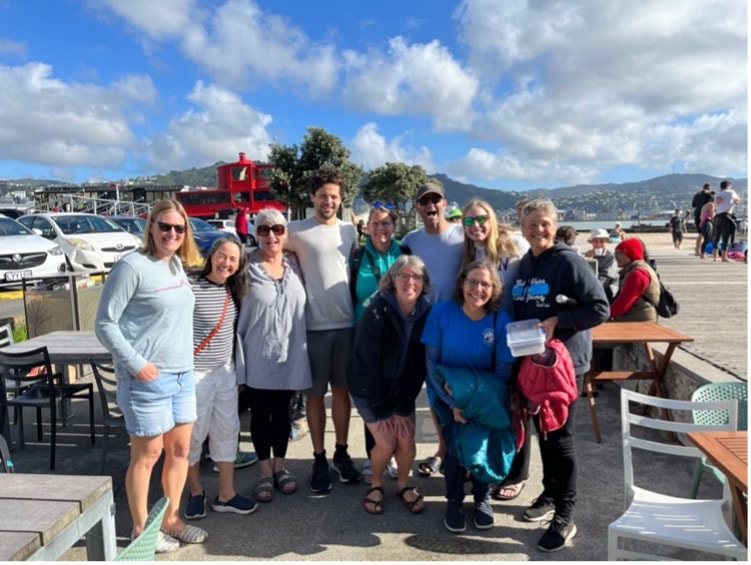




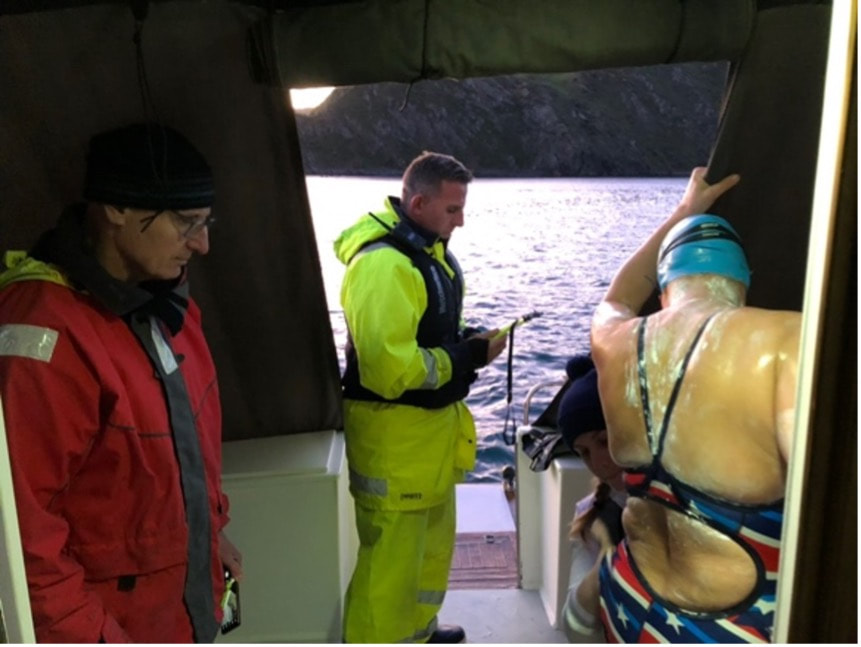












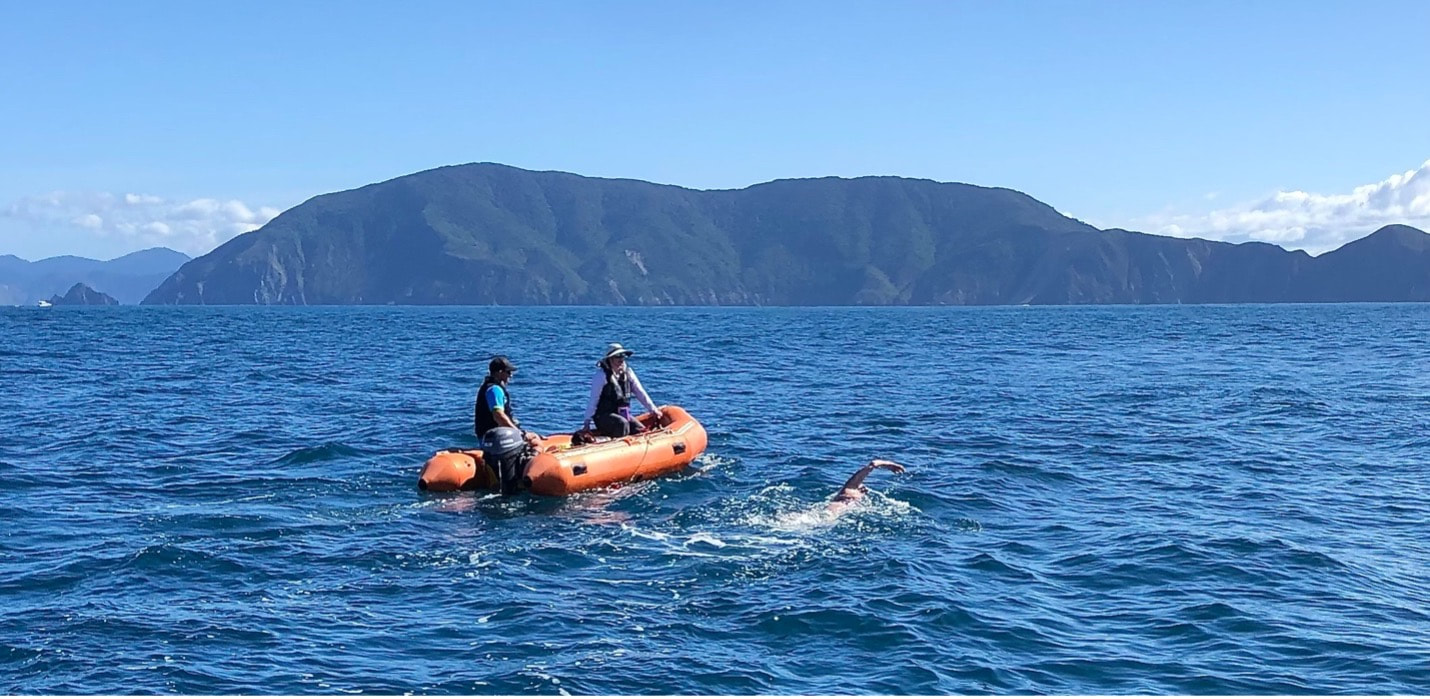
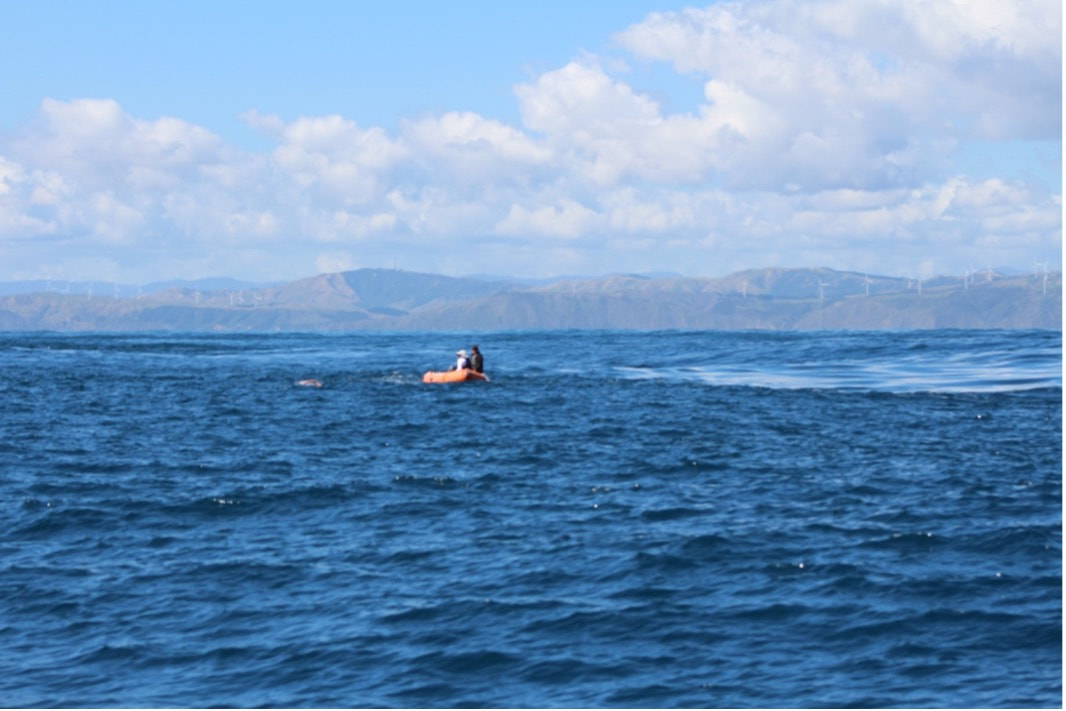


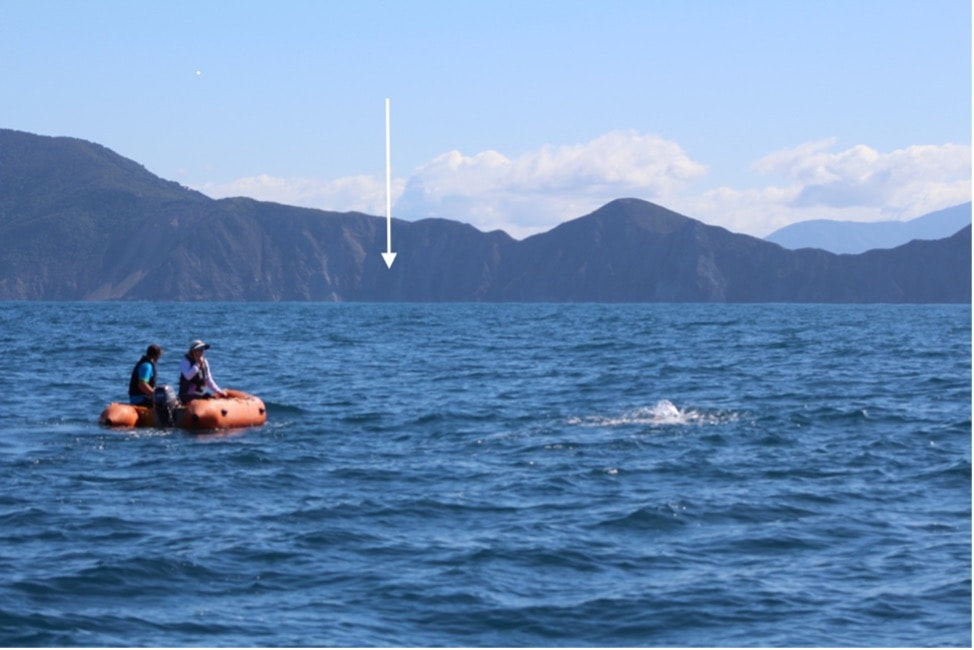
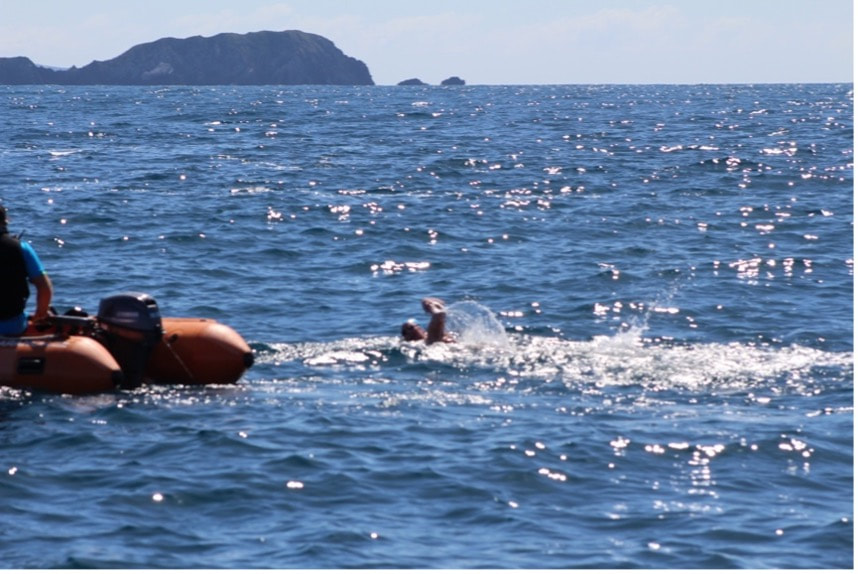

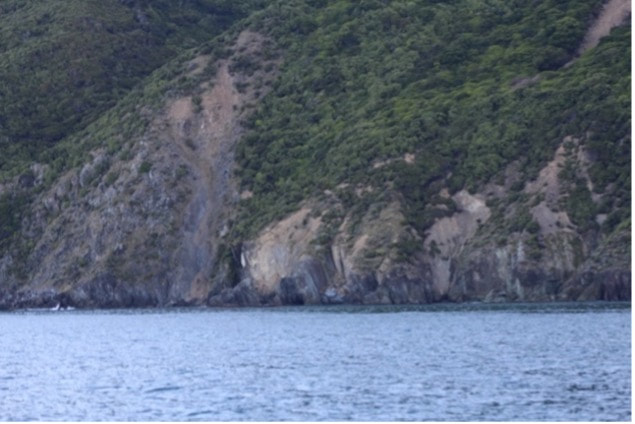







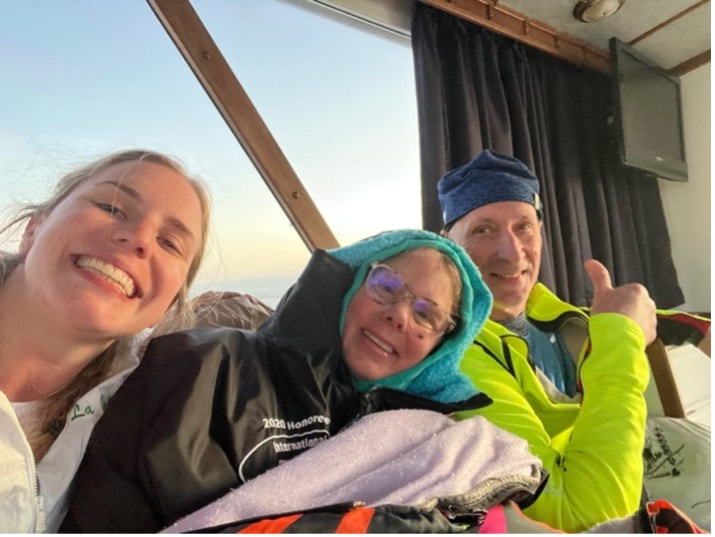









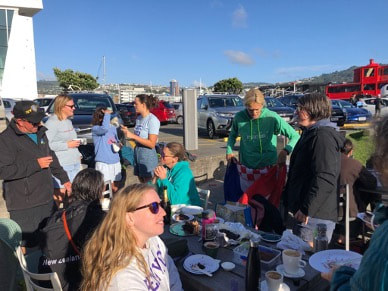


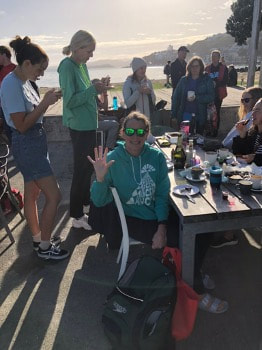






 RSS Feed
RSS Feed